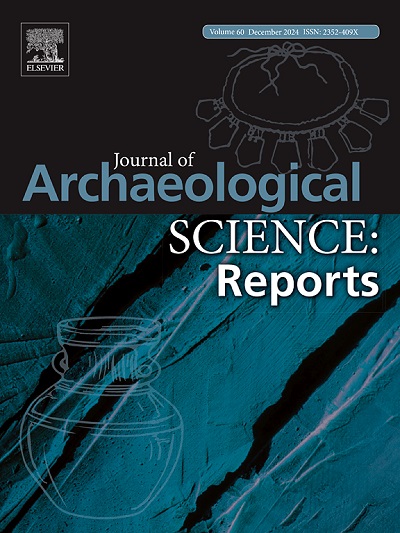First archaeometric distinction between turquoise sources in pre-hispanic contexts of the South-Central Andes: Mina Las Turquesas (Chile) and Cueva Inca Viejo (Argentina)
IF 1.5
2区 历史学
0 ARCHAEOLOGY
引用次数: 0
Abstract
This paper presents the initial comparative findings of archaeometric analyses conducted for turquoise provenance determination involving samples from two distinct mining sources located in Chile and Argentina. It summarizes the outcomes of initial, collaborative, and interdisciplinary binational research combining the fields of Archaeology and Chemistry. The primary aim was to discern potential disparities between turquoise specimens originating from the Atacama Desert, in Chile, and the Puna of Salta region in Argentina, which could indicate variations between the South Andean mineral sources and the origin of artifactual evidence made of turquoise. The samples analyzed included mineral fragments pertaining to the prehistoric mining site Mina Las Turquesas in El Salvador (Atacama Region, Chile), a sample corresponding to one bead from a funerary good from San Pedro de Atacama (Antofagasta Region, Chile), and samples recovered from the prehistoric mine of Cueva Inca Viejo (Puna of Salta, Northwestern Argentina). For this purpose, a combination of analytical techniques including Raman Spectrometry, Scanning Electron Microscopy with Energy Dispersive Spectrometry (SEM-EDS), X-Ray Diffraction (XRD) and Inductively Coupled Plasma Triple Quadruple (ICP-MS-TQe) were employed. The results reveal variations in the composition of turquoise deposits from pre-Hispanic mines recorded in Chile and Argentina. The application of lead isotope method using ICP-MS-TQe complemented with other techniques offers promising data to further pursue this initial archaeometric research on turquoise circulation in the South Central Andes.
求助全文
约1分钟内获得全文
求助全文
来源期刊

Journal of Archaeological Science-Reports
ARCHAEOLOGY-
CiteScore
3.10
自引率
12.50%
发文量
405
期刊介绍:
Journal of Archaeological Science: Reports is aimed at archaeologists and scientists engaged with the application of scientific techniques and methodologies to all areas of archaeology. The journal focuses on the results of the application of scientific methods to archaeological problems and debates. It will provide a forum for reviews and scientific debate of issues in scientific archaeology and their impact in the wider subject. Journal of Archaeological Science: Reports will publish papers of excellent archaeological science, with regional or wider interest. This will include case studies, reviews and short papers where an established scientific technique sheds light on archaeological questions and debates.
 求助内容:
求助内容: 应助结果提醒方式:
应助结果提醒方式:


